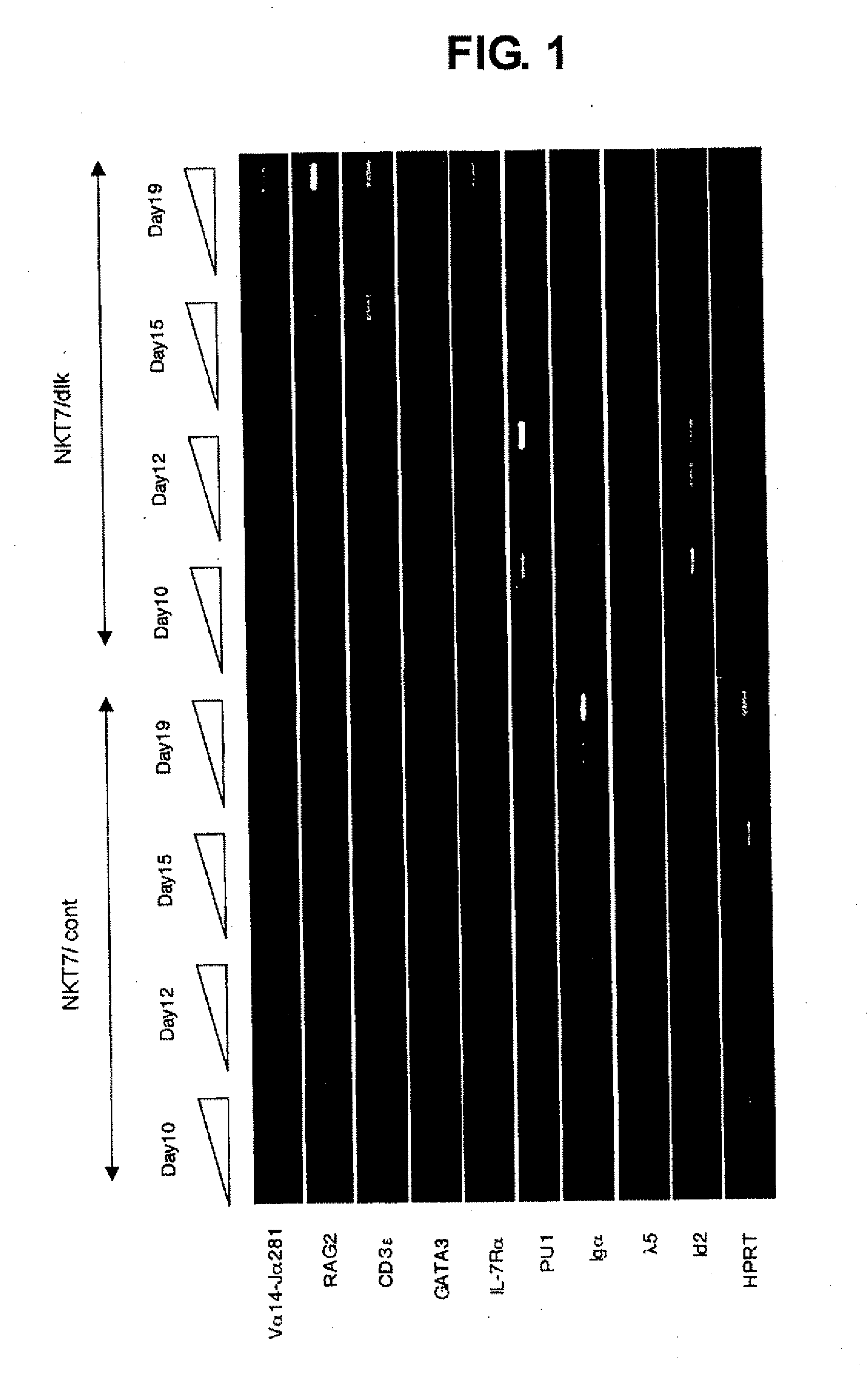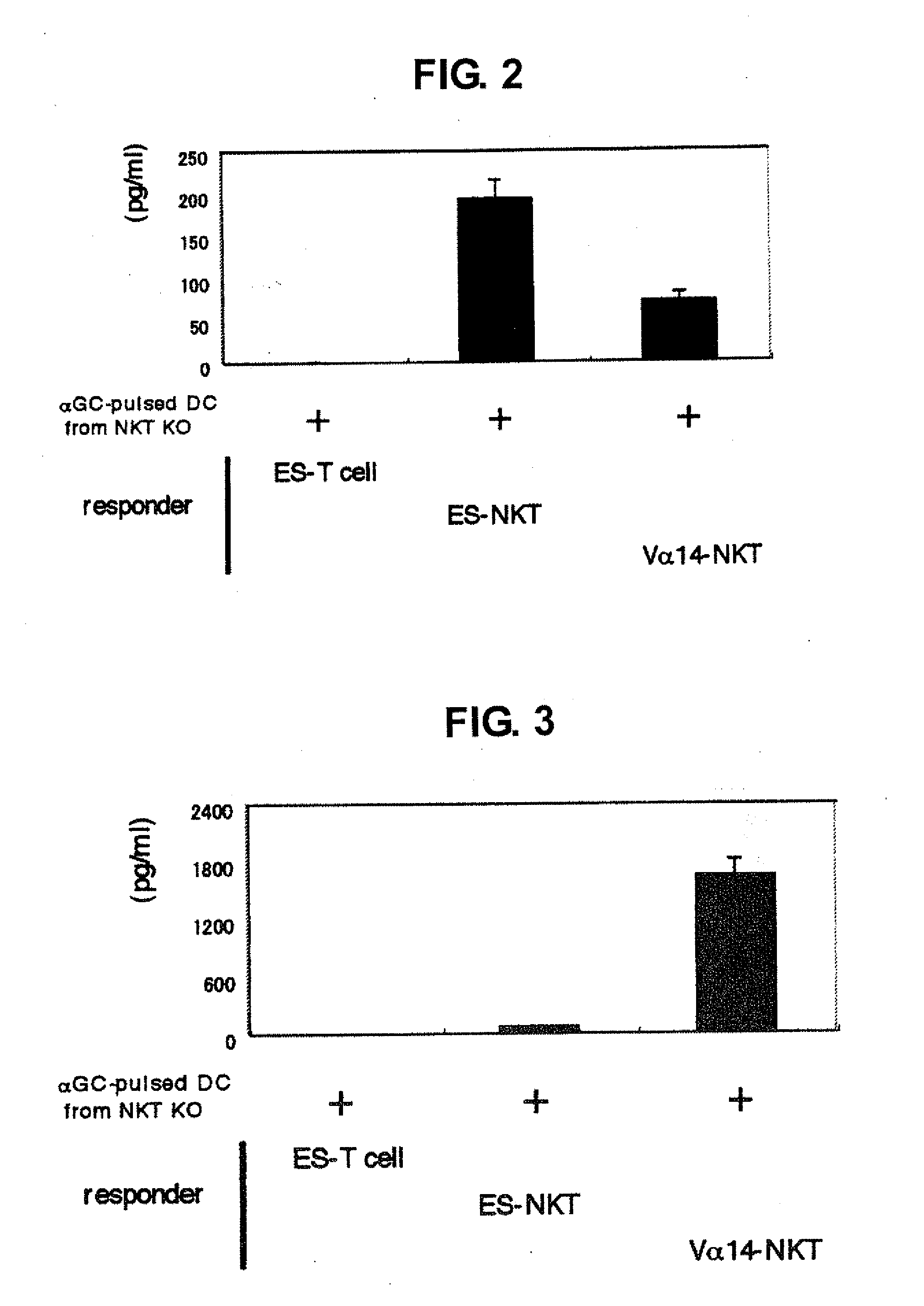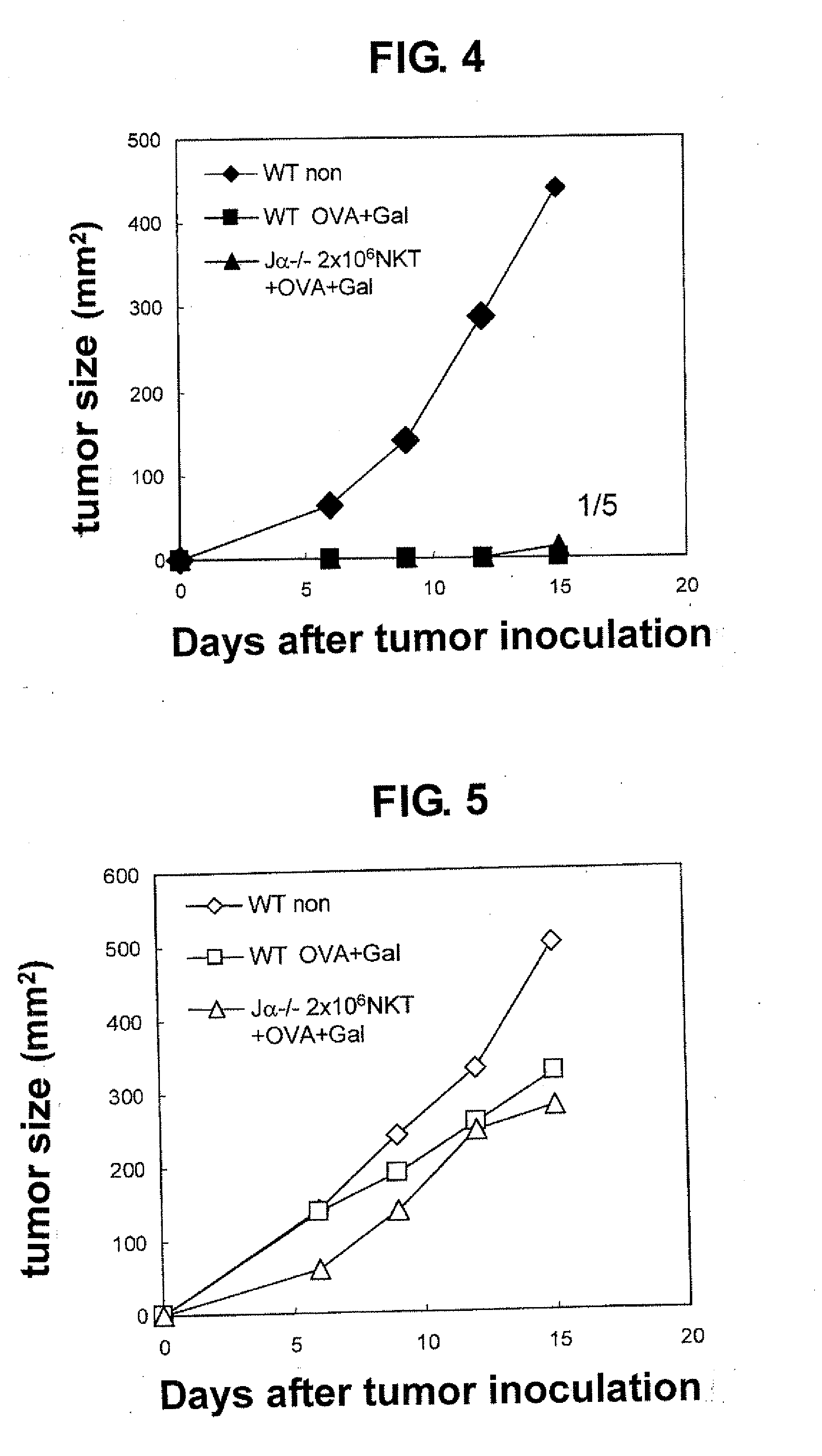In vitro differentiation/induction of lymphocyte from stem cell having genotype provided after gene reconstitution
a stem cell and in vitro technology, applied in the field of in vitro differentiation/induction of lymphocytes from stem cells, can solve the problems of inability to produce nkt cells using the reported method, inability to provide experimentally sufficient amounts of cells, and inability to use cells for treatment and the like, so as to achieve high efficiency and avoid immune rejection
- Summary
- Abstract
- Description
- Claims
- Application Information
AI Technical Summary
Benefits of technology
Problems solved by technology
Method used
Image
Examples
example 1
Differentiation Induction of ntES Cells
[0031]Clone 7 was cultured in a 3.5 cm culture dish in the presence of LIF to 20-30% confluent, and washed twice with phosphate buffer (PBS). TE (trypsin / EDTA, Sigma) was added and the mixture was stood still in an incubator at 37° C. for 5 min. The mixture was stirred well with an electric pipet and centrifuged at 500×g for 5 min. The supernatant was removed and the cells were counted. The cells were suspended in OP9 cell culture medium, and spread on OP9 cells or OP9-dlk cells for differentiation induction (each 1.0×105 cells / 10 cm culture dish). Thereafter, the cells were stood still in an incubator at 37° C., 5% CO2 for 3 days and the culture medium was exchanged. Culture was continued for two more days to induce mesoderm cells. The mesoderm cells were separated from OP9 cells or OP9-dlk cells by TE treatment. Cocultured cells were washed twice with 4 ml of PBS, 4 ml of TE was added per one culture dish. The mixture was stood still in an in...
example 2
Functional Analysis of NKT Cell Induced from ntES Cell
1) In Vitro Cytokine Production Function
[0037]Whether or not these NKT cells defined by TCRVβ+ / αGalCer-CD1d dimer+ indeed function was verified. These cells prepared from mouse interact with αGalCer-presenting dendritic cell (DC) and produce cytokines such as IFN-γ, IL-4 and the like. Thus, TCRVβ+ / αGalCer-CD1d dimer+ cells induced from clone 7 were cocultured with αGalCer-presenting DCs, and the concentration of each cytokine released in a culture medium was quantified by the ELISA method. OptEIA mIL-10 ELISA kit (Japan Becton, Dickinson) was used for mouse IL-10, and R&D Systems, Duosets (DY485, DY404, DY413) were used for mouse IFN-γ, IL-4, IL-13, respectively. DCs were purified from splenocytes of NKT cell deficient mouse (C57BL / 6 background TCR Jα281 chain deficient mouse) using mouse CD11c-beads [CD11c (N418) microbeads, Miltenyi]. The purity after passing a magnetic column using the beads was not less than 96%. As a control...
PUM
 Login to View More
Login to View More Abstract
Description
Claims
Application Information
 Login to View More
Login to View More - R&D
- Intellectual Property
- Life Sciences
- Materials
- Tech Scout
- Unparalleled Data Quality
- Higher Quality Content
- 60% Fewer Hallucinations
Browse by: Latest US Patents, China's latest patents, Technical Efficacy Thesaurus, Application Domain, Technology Topic, Popular Technical Reports.
© 2025 PatSnap. All rights reserved.Legal|Privacy policy|Modern Slavery Act Transparency Statement|Sitemap|About US| Contact US: help@patsnap.com



